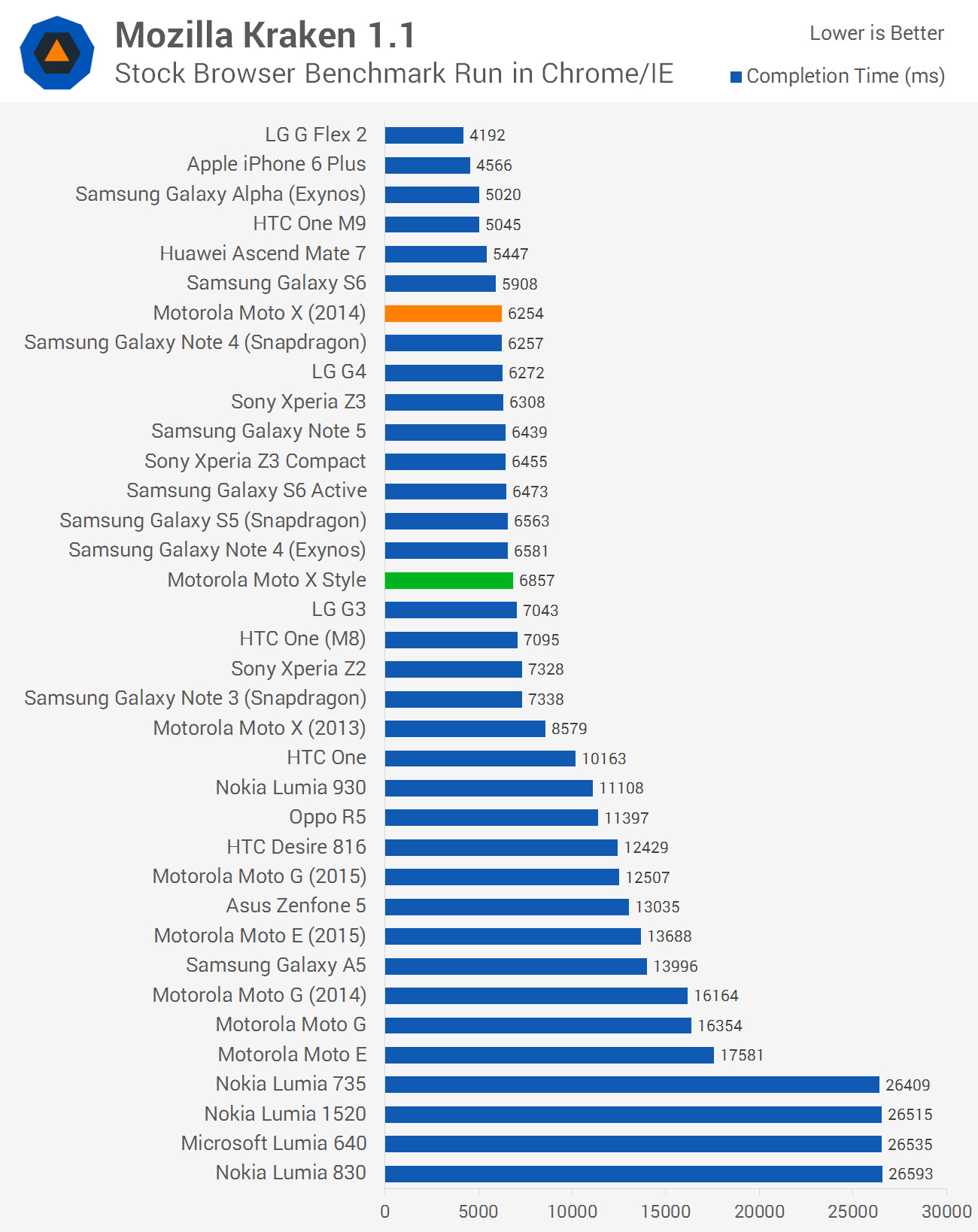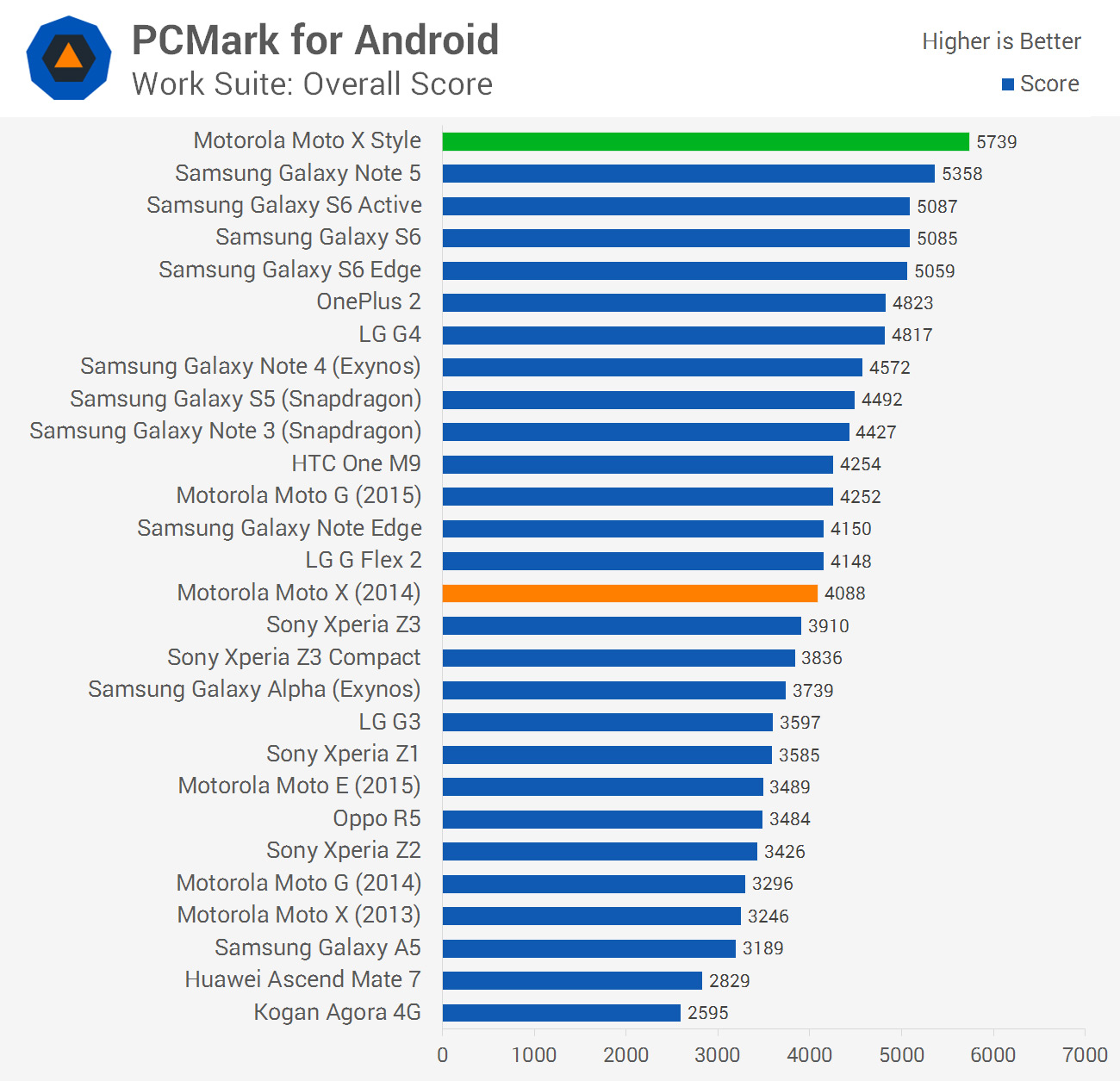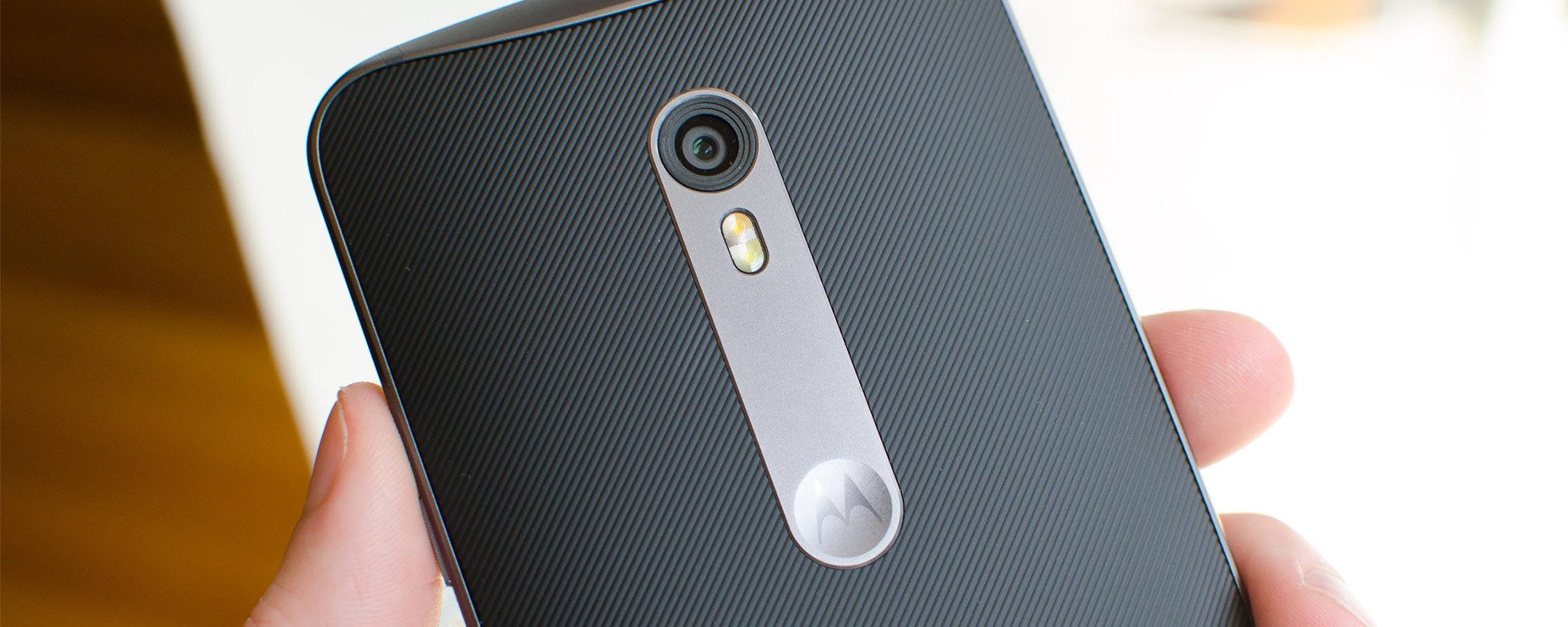Hardware Overview and CPU Performance
Inside the Moto X Style we're looking at the Qualcomm Snapdragon 808 SoC, which I covered extensively in my review of the LG G4 and should be your first port of call if you're interested in further details about this chip.
In short, the Snapdragon 808 features two ARM Cortex-A57 CPU cores clocked at 1.82 GHz alongside four Cortex-A53 cores at 1.44 GHz, resulting in a two-cluster, hexa-core configuration. There's also an Adreno 418 GPU clocked at 600 MHz, and a 64-bit LPDDR3 memory controller providing 14.9 GB/s of bandwidth, connected to 3 GB of RAM in the Moto X Style.
As for connectivity, the Moto X Style packs Category 6 LTE, HSPA+, 2G, Wi-Fi 802.11a/b/g/n/ac with MIMO support, Bluetooth 4.1 LE, GPS+GLONASS, and NFC. The LTE and HSPA+ bands in the Moto X Style differ slightly from the bands included with the Moto X Pure Edition, despite both phones being essentially identical, while the Pure Edition also supports United States' CDMA networks.
For storage we're looking at 16 GB in the $399 base model, with 32 GB and 64 GB models also available for $50 and $100 extra respectively. Normally 16 GB would be a bit slim on the storage front for a high-end device, but the inclusion of a microSD card slot mitigates this issue somewhat. 16 GB microSD cards are available for as low as $7 on Amazon, and although you won't get the same performance as internal NAND from a microSD, it's an extremely cheap way to up the storage to 32 GB.
The Moto X Style also includes two "processors" that Motorola calls the "natural language processor" and "contextual computing processor". Without taking apart the Moto X Style, it's unclear whether these are simply part of the Snapdragon 808 or are separate chips, but they will facilitate some of Motorola's always-on voice and gesture features.






In CPU-heavy benchmarks, the Moto X Style outperformed the LG G4, which also features a Snapdragon 808 SoC, by just over 10 percent. I suspect this is due to better thermal management in the X Style's design, leading to higher sustained clock speeds, as well as improved software across the board.
The Moto X Style marginally falls behind the other top Android devices out there. The Galaxy Note 5 boasts CPU performance 4% higher than the Style, while the Galaxy S6 is just 2% faster. On the other hand, the Style is faster in CPU-limited scenarios than some of the Snapdragon 810 devices I've reviewed, such as the OnePlus 2 (by 16%), the LG G Flex 2 (by 18%) and the HTC One M9 (by 29%).
Compared to the last-generation Moto X (2014), the Moto X Style was 16% faster in CPU-limited benchmarks, and 29% faster overall after factoring in an increase in NAND performance and GPU performance.

